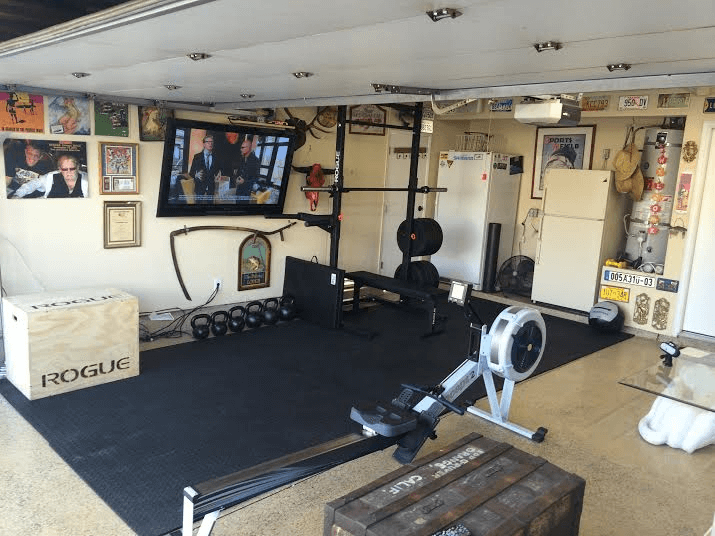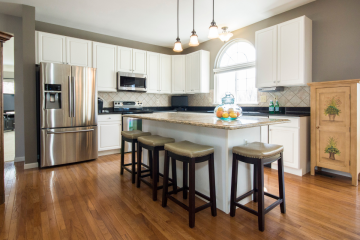Creating a home gym is an excellent way to stay fit and healthy without the hassle of commuting to a commercial gym. Whether you are a fitness enthusiast or just beginning your workout journey, a well-designed home gym can provide the convenience and motivation needed to achieve your fitness goals. One of the most popular locations for a home gym is the garage, as there is often space we’ve not properly utilised.
Creating a Functional Layout
Assessing Your Space
Before you start moving equipment into your garage, take some time to plan the layout. Consider the types of workouts you will be doing and the equipment you will need. Ensure there is enough space for movement and that your equipment is easily accessible.
Zoning Your Gym
Divide your gym into different zones based on the type of workout. For example:
- Cardio Zone: Place treadmills, stationary bikes, or rowing machines in one area.
- Strength Training Zone: Dedicate a space for weightlifting with racks, benches, and free weights.
- Flexibility and Recovery Zone: Create a quiet area for stretching, yoga, and foam rolling.
Safety Considerations
- Adequate Lighting: Ensure your gym is well-lit to prevent accidents.
- Ventilation: Good ventilation is important to keep the air fresh and to prevent overheating during workouts.
- Secure Heavy Equipment: Make sure all heavy equipment is securely fastened to prevent tipping or movement during use.
Choosing the Right Flooring
Importance of Proper Flooring
Selecting the appropriate garage flooring is a crucial step in setting up your home gym. The right flooring not only protects your garage floor from damage caused by heavy equipment and weights but also provides the necessary support and cushioning to prevent injuries.
Types of Flooring Options
- Rubber Flooring Rubber flooring is highly recommended for home gyms. It is durable, shock-absorbent, and provides excellent traction. Rubber mats or rolls are available in various thicknesses and can be easily installed over your existing garage floor.
- Foam Tiles Foam tiles are another popular choice, particularly for areas where you plan to do yoga or bodyweight exercises. They are softer than rubber flooring, providing extra cushioning, but may not be suitable for heavy weightlifting.
- Vinyl Flooring Vinyl flooring offers a good balance between durability and aesthetics. It is resistant to moisture and easy to clean, making it a practical option for a garage gym.
- Carpet Tiles Carpet tiles can be used for a softer, more comfortable surface. They are easy to install and replace but may not offer the same level of durability as rubber or vinyl flooring.
Installation Tips
- Clean and Prep the Garage Floor: Before installing new flooring, ensure the garage floor is clean and free of any debris.
- Measure Accurately: Measure your garage space accurately to determine how much flooring material you will need.
- Consider Subflooring: Depending on the type of flooring you choose, you may need a subfloor for additional support and insulation.
Organising Your Gym with Storage Solutions
Benefits of Good Organisation
A well-organised home gym not only looks tidy but also enhances your workout efficiency. Having everything in its place means you can focus more on your exercises and less on finding your equipment.
Types of Storage Boxes and Solutions
- Stackable Plastic Bins
Stackable plastic bins are versatile and can be used to store a variety of gym accessories like resistance bands, yoga mats, and small weights. Look for bins with clear sides to easily identify contents. - Wall-Mounted Racks and Shelves
Utilising wall space is a smart way to keep your garage gym organised. Wall-mounted racks and shelves can hold items like kettlebells, dumbbells, and medicine balls, freeing up floor space. - Storage Cabinets If you have larger equipment or items you want to keep out of sight, consider installing storage cabinets. These can be particularly useful for storing cleaning supplies, extra towels, and other miscellaneous items.
- Pegboards Pegboards are a versatile storage solution that can be customised to fit your needs. Use hooks and attachments to hang jump ropes, resistance bands, and other small equipment.
DIY Storage Ideas
- PVC Pipe Storage: Use PVC pipes to create custom storage racks for storing yoga mats or foam rollers.
- Wooden Crates: Repurpose wooden crates to store weights or other gym accessories. They can be stacked or mounted on walls for easy access.
- Magnetic Strips: Install magnetic strips on the walls to hold metal tools or accessories like wrenches, making them easily accessible during equipment maintenance.
Tips for Effective Organisation
- Categorise Equipment: Group similar items together to make it easier to find what you need. For example, keep all yoga-related items in one bin and weightlifting accessories in another.
- Label Everything: Labelling storage boxes and bins can save time and reduce frustration when searching for specific items.
- Regular Maintenance: Periodically check your storage solutions to ensure they are still effective and make any necessary adjustments.
Creating Your Perfect Home Gym
Building your own home gym in the garage can be a rewarding project that pays off in convenience and health benefits. By focusing on the right flooring and effective storage solutions, you can create a safe, organised, and functional workout space tailored to your fitness needs. Whether you are lifting weights, practising yoga, or doing cardio, a well-planned garage gym can help you achieve your fitness goals right at home.



